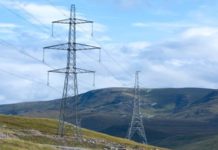 Scottish & Southern Energy Networks has agreed to procure flexibility and demand-side response services across its entire network, rather than just constrained areas, which SSEN calls CMZs.
Scottish & Southern Energy Networks has agreed to procure flexibility and demand-side response services across its entire network, rather than just constrained areas, which SSEN calls CMZs.
The DNO said it has not set a megawatt cap on how much flexibility it will procure, nor a budget cap.
“We are committed to securing flexibility market services wherever possible in lieu of load-based reinforcement so we do not want to cap our aspirations,” a spokesperson told The Energyst.
SSEN urged anyone in its distribution areas interested in providing flexibility to register on the Piclo platform, a flexibility marketplace used by distribution operators to find service providers.
The deal is Piclo’s first commercial contract, following trials with all of the UK DNOs.
For SSEN’s requirements, providers can be individuals, communities or aggregators. All assets – from small scale renewables, batteries and electric cars, as well as load response and demand reduction/energy efficiency – can play a role, said the company.
SSEN says there is no minimum kW threshold to register an interest, but it may introduce one ahead of tenders. It has floated paying around £300/MWh for flexibility, and will initially procure four services. The split between availability and utilisation payments will vary by service:
- CMZ Prevent – the traditional CMZ product that supports the management of peak demand.
- CMZ Prepare – to support the network during planned maintenance work.
- CMZ Respond – to support the network during fault conditions as a result of maintenance work
- CMZ Restore – to support the network during faults that occur as a result of equipment failure.
SSEN plans to launch three more CMZ service types by the end of the year.
“SSEN is committed to being a neutral facilitator of local and national markets that are created by the transition to a flexible network,” said Stewart Reid, head of Future Networks at SSEN.
“To do this successfully visibility, transparency and accessibility will be key. Too often asset owners that may be considering providing flexibility services find that the process is neither clear nor simple.
“With Piclo we are hoping to address that challenge, to provide the communities in which we operate a level-playing field that supports local solutions and builds a network of flexibility providers.”
Piclo CEO James Johnstone said he is “delighted” to reach a commercial agreement with SSEN – and outlined global expansion plans.
“This deal will hopefully be the first of many, not only in the UK but with other grids across the globe which suffer from the same limitations,” he said. “The potential reach for our software is enormous.”
Related stories:
SSE Networks to bring households into DSR this summer
How to balance the grid using energy efficiency as a tradeable resource
National Grid focuses on bringing smaller firms, EVs and households into flexibility
Domestic DSR: Social Energy lands first megawatt FFR contract, plans 350MW by 2020
All DNOs commit to considering flexibility over network reinforcement
Northern Powergrid launches DSR tender
WPD extends Midlands and South West DSR call until 21 December
DNO flex procurement: The learning so far from UKPN and WPD
Aggregators: Upload your data to grow DNO flexibility markets
UKPN eyes 200MW of demand-side response, details new tenders
WPD to launch flexibility tenders across all networks in 2019
SPEN joins Piclo flex platform
Electricity North West signs up to Piclo platform, plans 36MW DSR tender
UK Power Networks partners with Open Utility on flex trial
SSEN to trial Open Utility’s flex procurement platform
Follow us at @EnergystMedia. For regular bulletins, sign up for the free newsletter.




Technology now exists to produce zero carbon , renewable energy electrical power at affordable cost .It can be achieved at large scale, 24/7 and 365 days per year. Greenstorc are developing sites around Europe and are also looking at Microgrids for island nations. However demand is so high that the biggest challenge is to scale up to accommodate this demand. Therefore Greenstorc are already committed for the next couple of years. However, it does confirm that the future of zero emission energy is electric.